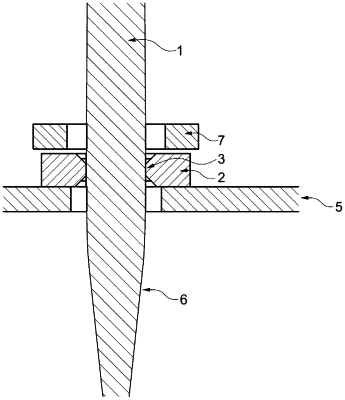| CPC C03B 17/067 (2013.01) [C03B 17/064 (2013.01); C03C 3/062 (2013.01); C03C 3/064 (2013.01); C03C 3/087 (2013.01); C03C 3/091 (2013.01); C03C 3/093 (2013.01); C03C 3/097 (2013.01); C03C 3/21 (2013.01); C03C 3/247 (2013.01); C03B 23/037 (2013.01)] | 5 Claims |

|
1. A method for the production of a flat glass surfaces, comprising the steps of:
passing a glass through a forming device that has a first region, wherein the glass has four sides, wherein the glass is at a transformation temperature Tg of the glass at a viscosity of 1013 dPas while the glass is in the first region;
passing the glass through a second region of the forming device, wherein the glass is at a temperature that is within a temperature range that encompasses a processing temperature Va of the glass and has a viscosity of 104 dPas while the glass is in the second region; and
passing the glass through a faceplate of the forming device,
wherein the faceplate is between the first region and the second region,
wherein the faceplate thermally separates the first region and the second region,
wherein the faceplate comprises distance sections and contact sections,
wherein the-contact sections comprise projections that contact the glass on at least one point on each of at least two sides of the glass, and
wherein the distance sections do not contact the glass so that a slit with a width of at most 5 mm is formed between the glass and the distance sections of the faceplate as the glass is passed through the faceplate.
|